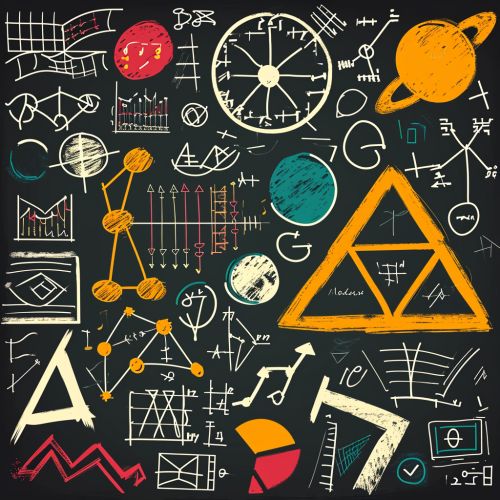Model Theory
Introduction
Model theory is a branch of mathematical logic that deals with the relationship between a formal language (in the sense of logic) and its interpretations, or models. A model is a structure that gives meaning to the sentences of the formal language, and model theory seeks to understand the properties of models, especially those properties that are independent of the particular way the model is represented.


Formal Languages and Structures
In model theory, a formal language is a set of symbols and rules for combining them. These symbols can represent objects, relations, functions, and logical connectives. A structure, on the other hand, is a mathematical object that gives meaning to the symbols of the language. It consists of a domain of objects, along with interpretations for the relations, functions, and logical connectives of the language.
A model of a formal language is a structure that satisfies the sentences of the language. For example, the natural numbers with addition and multiplication form a model of the language of arithmetic.
Syntax and Semantics
The study of model theory is divided into two main parts: syntax and semantics. Syntax deals with the formal language itself, its symbols and the rules for combining them. Semantics, on the other hand, deals with the interpretation of the language, i.e., the models.
The syntax of a formal language is usually given by a set of axioms and inference rules, which define the sentences of the language. The semantics of the language is given by the models that satisfy these sentences.
Model-Theoretic Properties
Model theory studies properties of models that are preserved under isomorphism, a notion of equivalence between models. These properties are often referred to as model-theoretic properties.
One of the central concepts in model theory is the notion of a theory, which is a set of sentences that is closed under logical consequence. A model is a model of a theory if it satisfies all the sentences in the theory. The study of theories and their models is a major part of model theory.
Compactness and Completeness
Two fundamental theorems in model theory are the Compactness Theorem and the Completeness Theorem. The Compactness Theorem states that if a set of sentences is such that every finite subset of it has a model, then the whole set has a model. The Completeness Theorem, proved by Gödel in 1930, states that a set of sentences is satisfiable (i.e., has a model) if and only if it is consistent (i.e., does not lead to a contradiction).
Model-Theoretic Stability
Stability theory, a subfield of model theory, studies stable theories, which are theories with certain nice model-theoretic properties. Stability theory was developed by Shelah in the 1960s and 1970s and has been a major area of research in model theory ever since.
Applications of Model Theory
Model theory has applications in many areas of mathematics, including algebra, number theory, and geometry. For example, model theory has been used to prove results in algebraic geometry and number theory, such as the Ax-Grothendieck theorem and the Manin-Mumford conjecture.
